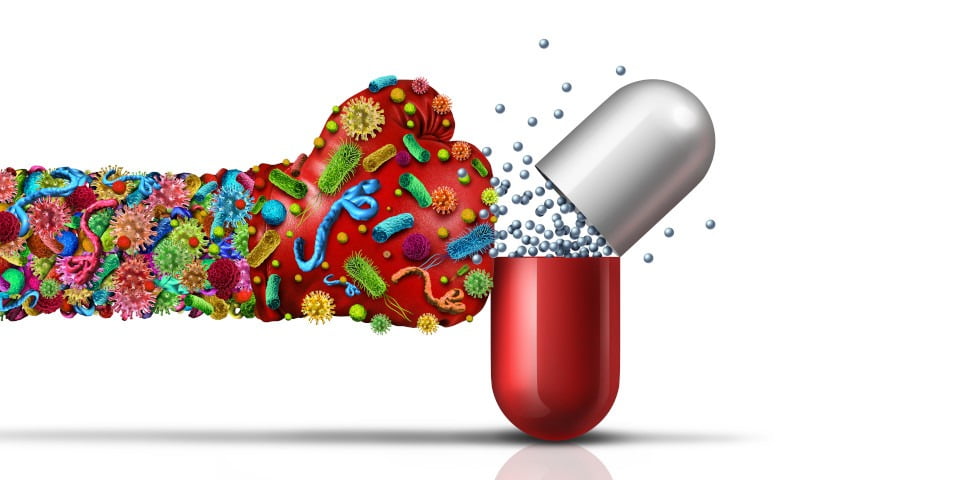Antibiotic resistance is one of the biggest threats to human health, but a new discovery could help in the war against superbugs, potentially saving millions of lives.
University of Adelaide researchers were involved in a collaborative study with Professor John Moses from Cold Spring Harbor Laboratory, investigating ways to modify existing antibiotics so they can be more effective against drug-resistant bacteria.
“We have all been prescribed an antibiotic at some time in our lives, whether it be to treat a sinus infection or a skin infection. The problem is overuse of antibiotics has allowed bacteria to develop resistance to the effects of our current antibiotics,” said co-senior author Dr Tatiana Soares da Costa from the University of Adelaide’s Waite Research Institute.
“If we don’t act now, we will soon run out of antibiotic options to treat even the simplest infections.”
In a bid to find a potential solution to this looming global health crisis, scientists used a new technique for the first time to successfully modify an existing antibiotic called vancomycin, which is often used as a last resort for serious bacterial infections.
“By using click chemistry – chemical reactions that join molecular building blocks together – Professor Moses’ team were able to connect two molecules of the antibiotic vancomycin with a flexible, shape-shifting core, meaning that the new molecules can adapt how they interact with bacteria,” said co-first author Jessica Wyllie from the University of Adelaide.
“Our team at the University of Adelaide then tested these molecules and showed they were a stronger antibiotic that was able to kill bacteria that was initially resistant to vancomycin.
“In fact, we found the bacteria were less likely to develop resistance to those molecules so we should be able to use this antibiotic for longer to treat bacterial infections,” she said.
Antimicrobial resistance, including drug-resistant bacteria, is already believed to be responsible for around 1,000 deaths a year in Australia.
By 2050, drug-resistant bacteria are predicted to cause over 10 million deaths per year across the globe.
The rapid emergence of drug-resistant bacteria has been classified as a top 10 global public health threat by the World Health Organization.
Although re-engineering has been a longstanding approach to antibiotic development, this is the first time that a shape-shifting core has been used to produce new antibiotics and represents a major step forward in the battle against superbugs.
“This study shows re-engineering our current arsenal of antibiotics is a viable approach to fast track the development of better antibiotics to the market, potentially saving millions of lives,” said Dr Soares da Costa.
The study was conducted by scientists from the University of Adelaide and US based non-profit research institution, Cold Spring Harbor Laboratory, as well as researchers from La Trobe University, University of Nottingham, University of Oxford and University of Newcastle.
The results have been published in the journal, PNAS.
Text by: The University of Adelaide










